Expression in Science
In science, an expression refers to a mathematical statement that combines numbers, variables, and mathematical operations such as addition, subtraction, multiplication, division, and exponentiation. Expressions are used to represent and solve various scientific concepts and calculations.
Types of Expressions
There are several types of expressions commonly used in science:
- Numerical Expressions: These contain only numbers and mathematical operations. For example, 5 + 3 or 2 * 4.
- Variable Expressions: These contain variables (such as x, y, or z) along with numbers and mathematical operations. For example, 3x + 2y or 5z - 7.
- Algebraic Expressions: These are combinations of variables, numbers, and mathematical operations. For example, 2x^2 + 3xy - 5.
Key Concepts
When working with expressions in science, it's important to understand the following key concepts:
- Order of Operations: The rules for performing mathematical operations in the correct order (PEMDAS - Parentheses, Exponents, Multiplication and Division from left to right, Addition and Subtraction from left to right).
- Like Terms: Terms that have the same variables raised to the same powers. For example, 3x and 5x are like terms.
- Simplifying Expressions: Combining like terms and performing operations to simplify an expression to its simplest form.
Study Guide
Here are some tips for studying expressions in science:
- Understand the basic principles of mathematical operations (addition, subtraction, multiplication, division, and exponentiation).
- Practice identifying and classifying different types of expressions (numerical, variable, algebraic).
- Learn and apply the order of operations to simplify expressions correctly.
- Practice combining like terms and simplifying algebraic expressions.
- Work on solving equations and inequalities involving expressions.
By mastering the concepts and skills related to expressions, you will be better equipped to tackle various scientific problems and calculations.
.◂Science Worksheets and Study Guides Eighth Grade. Understanding Weather
Study Guide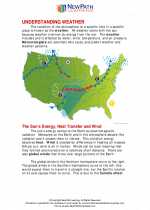 Understanding Weather
Understanding Weather  Activity Lesson
Activity Lesson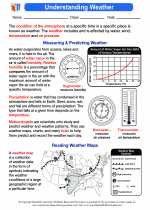 Understanding Weather
Understanding Weather  Worksheet/Answer key
Worksheet/Answer key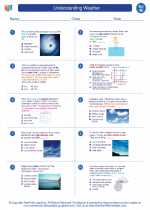 Understanding Weather
Understanding Weather  Worksheet/Answer key
Worksheet/Answer key Understanding Weather
Understanding Weather  Worksheet/Answer key
Worksheet/Answer key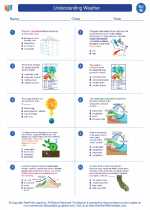 Understanding Weather
Understanding Weather  Worksheet/Answer key
Worksheet/Answer key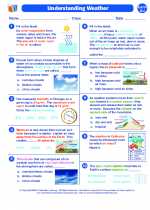 Understanding Weather
Understanding Weather  Vocabulary/Answer key
Vocabulary/Answer key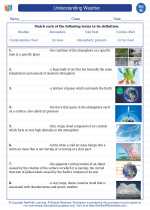 Understanding Weather
Understanding Weather  Vocabulary/Answer key
Vocabulary/Answer key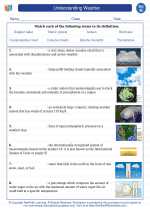 Understanding Weather
Understanding Weather  Vocabulary/Answer key
Vocabulary/Answer key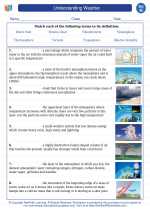 Understanding Weather
Understanding Weather 

 Activity Lesson
Activity Lesson
 Worksheet/Answer key
Worksheet/Answer key
 Worksheet/Answer key
Worksheet/Answer key
 Worksheet/Answer key
Worksheet/Answer key
 Worksheet/Answer key
Worksheet/Answer key
 Vocabulary/Answer key
Vocabulary/Answer key
 Vocabulary/Answer key
Vocabulary/Answer key
 Vocabulary/Answer key
Vocabulary/Answer key

The resources above cover the following skills:
Earth/Space Science: Students will use scientific skills and processes to explain the chemical and physical interactions (i.e., natural forces and cycles, transfer of energy) of the environment, Earth, and the universe that occur over time.
Interactions of Hydrosphere and Atmosphere: Cite evidence to explain the relationship between the hydrosphere and atmosphere.
Recognize and describe the water cycle as the distribution and circulation of Earth's water through the glaciers, surface water, groundwater, oceans, and atmosphere.